- No results found
-
{{page.data.Name}}
Autocar – The Garbage Truck Manufacturer
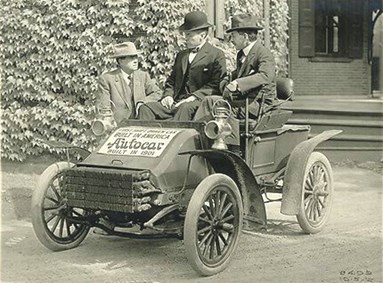
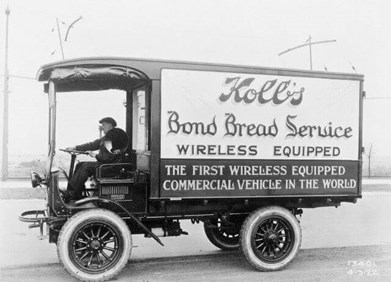
In 1899, the first motor truck commercially available in the United States carried the Autocar name. Today’s Autocar is the only American severe-duty truck brand 100 percent committed to purpose-built vocational trucks. One of the first products to carry the Autocar name was the “Delivery Wagon,” introduced in 1899, which marked the first motor truck in the Western Hemisphere. This innovative vehicle created an entirely new category of motor vehicles as the American public realized the potential for trucks as vocational work tools. Over the ensuing century, the Autocar name has been proudly carried on the toughest, heavy-duty work trucks on the planet. Today, Autocar, LLC produces custom-engineered, severe-duty trucks designed for various vocations, including refuse, recycling, construction, concrete, road maintenance, military, aircraft support and more. Severe duty is standard at Autocar, not an option.
Since 1897, the Autocar brand, has long signified trucks that are:
Autocar – The Garbage Truck Manufacturer
There are many names for garbage trucks:
Regardless of the name, a garbage truck’s primary function is to collect and dispose of trash, garbage, cardboard, plastic, wood posts, wooden pallets, brush/yard waste and more. Autocar is the only American-owned severe-duty manufacturer that builds 100 percent vocational trucks, which are engineering marvels.
Engineering Trucks to Fit a Challenging Market
As a leading producer of trash, the United States needs refuse trucks that are durable and reliable. Autocar understands this need and manufacturers trucks to meet the market’s needs. According to rubicon.com,
Autocar’s Refuse Truck Models
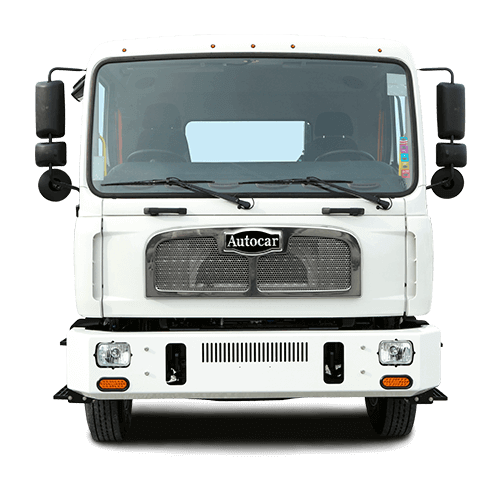
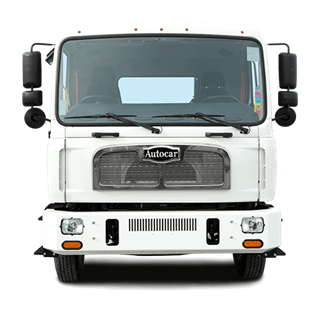
The Autocar ACMD is a medium/heavy duty cabover truck that can be configured as a class 7 or class 8 truck. It is a vocational workhorse with exceptional safety, durability and value. Three-person seating is available. Powered by a Cummins diesel or CNG/LNG engine.
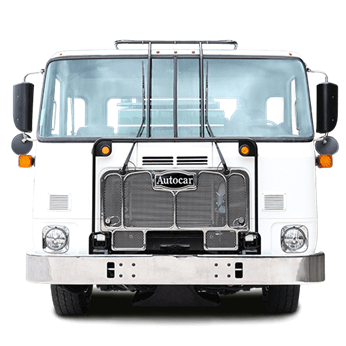
The Autocar ACX is a severe duty class 8 cabover vocational truck with the biggest cab in the industry and the tightest turning radius. Garbage truck manufacturer Autocar custom-engineers for each customer’s application to handle the most extreme challenges with ease. The ACX comes in 4x2, 6x4, 8x4, 8x6,10x4, 10x6 and 12x6 configurations and is powered by a Cummins diesel or CNG/LNG engine.
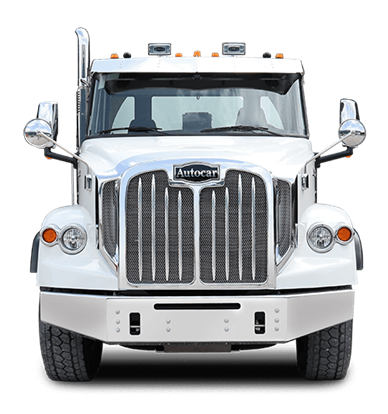
Built for the most challenging conditions, the Autocar DC-64 severe-duty conventional vocational truck has an innovative chassis design for superior drivability. Operators appreciate its spacious and functional cab (inside and out). Every detail is engineered for maximum up time and the easiest serviceability. Powered by a Cummins diesel or CNG/LNG engine.
Garbage Truck Chassis
There are two main types of garbage truck chassis, the cabover truck and the conventional truck.
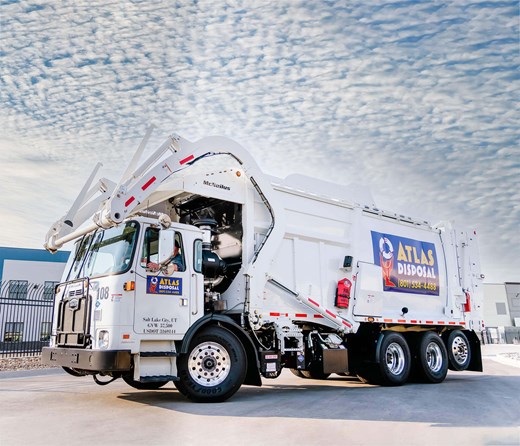
Cabover Engine
Just as the name says, cabover engines are cab-over-engine or COE. In a COE the operator sits above the truck’s engine, a design that gives the operator better visibility and a cab that allows for a tighter turning radius.
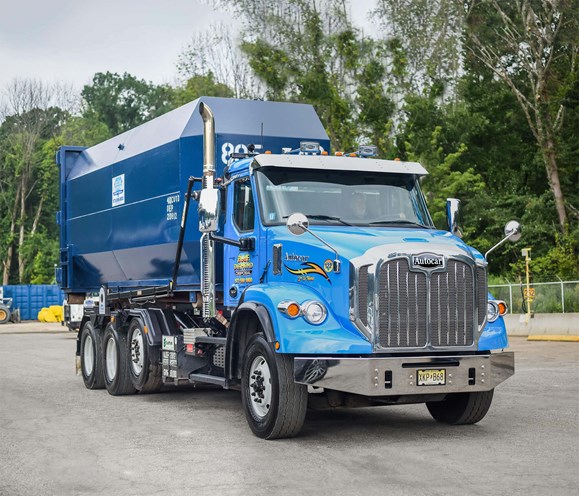
Conventional
A severe-duty conventional cab features an engine that sits in front of the operator in a separate engine compartment. Conventional cab trucks can pull heavier refuse loads than COEs and handle rougher roads and driving terrain.
Class 8 Heavy-Duty Garbage Bodies AKA Refuse Hoppers
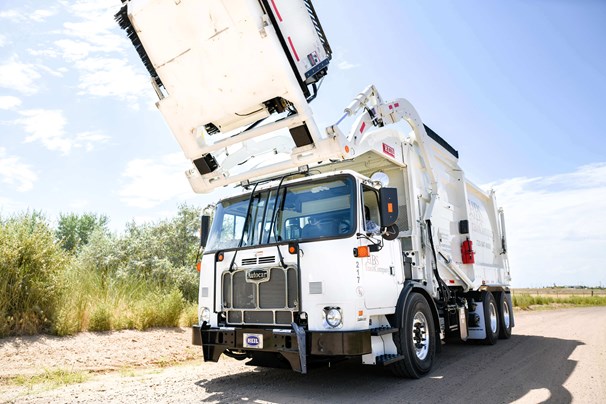
Front End Loaders (FEL)
Front-end loader refuse bodies feature automated forks on the front, which pick up a waste container and lifts it over the truck to dump the contents into its hopper. Most common for commercial waste collection fleets, front-loaders are primarily used for commercial waste removal. The typical cab configuration for a front-end loader is a single left-hand drive cab fitting the needs of the operator.
Residential applications for front-end loaders may use the Curotto-Can®, a refuse collection can in front of the truck’s cab allowing the operator to use a mechanical arm and place waste bin material into the can. The operator can then lift the full can over the truck and dump the waste into its hopper. Common cabs for residential front-end loaders include dual left-hand drive and right-hand drive in either a sitting or standing configuration.
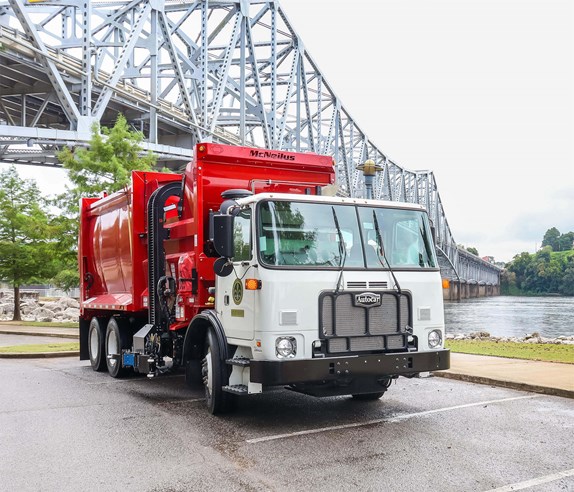
Automated Side Loaders (ASL)
Automated side loaders are a type of refuse body that features automated arms at the side which pick up a waste container and empty its contents into the truck’s hopper. A single operator uses joystick controls to grab the container, empty it and return it to the curbside while they remain in the cab. The most common cab configuration, a single right-hand drive cab, helps the operator get a better view of the container. Automated side loaders are primarily used for residential waste removal.
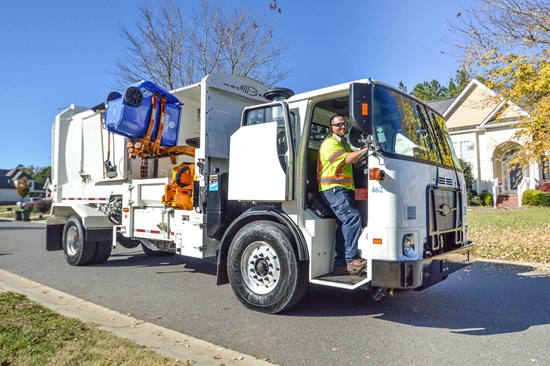
Manual Side Loaders (MSL)
Manual side loaders refuse bodies are used to load waste from the side of the truck. The low sill height in manual side loaders allows collectors to empty trash containers and load garbage bags along with material left on the curb. Manual side loader configurations include dual left and right-hand stand cabs so refuse collectors can get in and out of the cab easily. Some are split bodies for recycling, which continues to grow, increasing the demand for pure recycling trucks. Manual side loaders are primarily used for residential garbage removal.
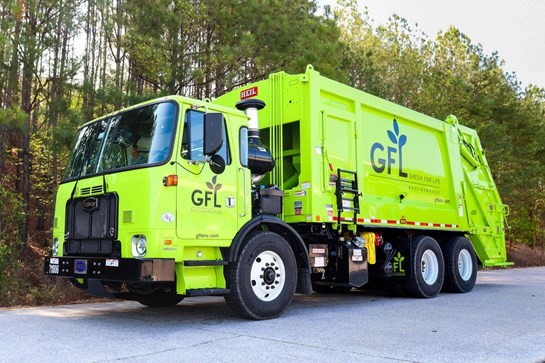
Rear Loaders (RL)
Rear loaders are garbage bodies that feature a mechanical lifting system in which the operator attaches the trash container to the lifting mechanism on the rear of the truck. Contents of the bin are mechanically dumped into the truck hopper. Split-body loaders allow the collection of more than one waste stream in a single pass. The split-body loader can collect municipal waste destined for landfills and recyclables. Cab configurations of a rear loader commonly include the single left-hand drive cab followed by the dual drive left-hand sit and right-hand stand cab. Rear loaders are primarily used for commercial garbage removal.
Autocar’s Industry Leading Body Integration
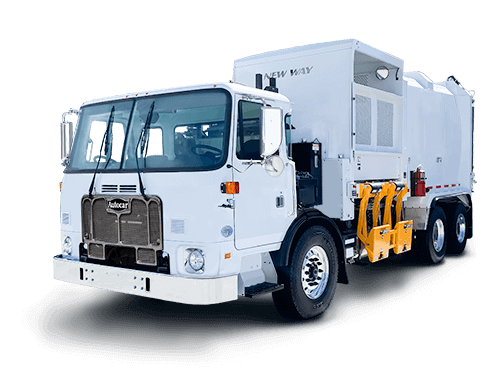
Autocar, LLC has a mission to provide the highest level of body integration in the industry with the Power of One and Ultimate Power of One.
The Power of One (PO1)
The Power of One allows Autocar to provide body integration between the truck chassis and body by partnering with willing body companies to ensure seamless body mounting and a production-ready tool. Partnership with body companies allows Autocar to integrate body features like exact laser cut chassis, punched holes to eliminate welding and the installation of body controls and components. As a result, the Power of One helps to deliver trucks faster with a seamless body integration process once it leaves the line at Autocar.
The Ultimate Power of One
Autocar offers the Ultimate Power of One on DC-64R roll-off refuse trucks, allowing for the industry's highest level of body integration. The Ultimate Power of One brings together the chassis and body – treating the truck as one complete tool that is ready to work the second it comes of the line. The brand's partnership with Galfab, a manufacturer of roll-off hoists and containers, offers a parallel engineering experience all done on Autocar's production line, including:
The Autocar DC-64R roll-off with the Ultimate Power of One avoids frame welds while helping to increase quality, reliability, uptime and a faster order-to-delivery experience for a custom-engineered refuse truck.
Class 8 Heavy-Duty Refuse Hoists & Carriers
Class 8 refuse hoists and carriers are typically sold separately, however trucks purchased with the Ultimate Power of One roll off the line with the hoist already installed. Each hoist and carrier have slightly different operating mechanisms and benefits for the user.
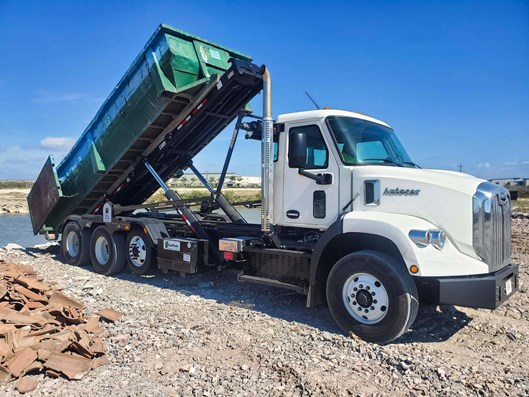
Refuse Truck Cable / Roll-off Hoists
Cable/roll-off hoists use a cable system that hooks onto a refuse container, also known as a dumpster container, and pulls it up onto the back of the truck, using hydraulics to winch the cables. The garbage truck chassis has a tilt frame that is elevated by a hydraulic ram from a horizontal position on the truck to where the rear ends of the rails touch the ground to hoist the container up onto the rails. The operator must exit the cab to attach the cable and work controls outside the truck to load and unload roll-off containers.
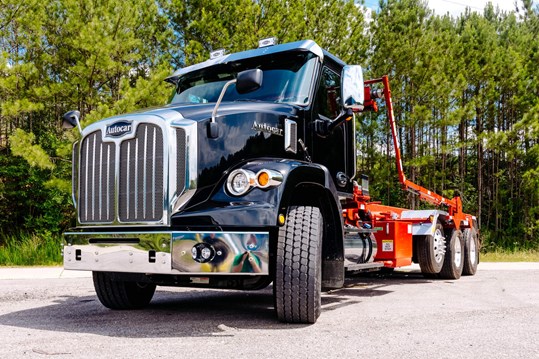
Hooklift Hoists
Hooklift hoists use a hydraulic lift connected to a hook to pull a refuse container onto a truck bed or push it off in the dumping motion. The hoist has two or three large rollers at the end of the hooklift system, which align with rails underneath the hooklift container. The operator stays in the cab to mount/demount containers.
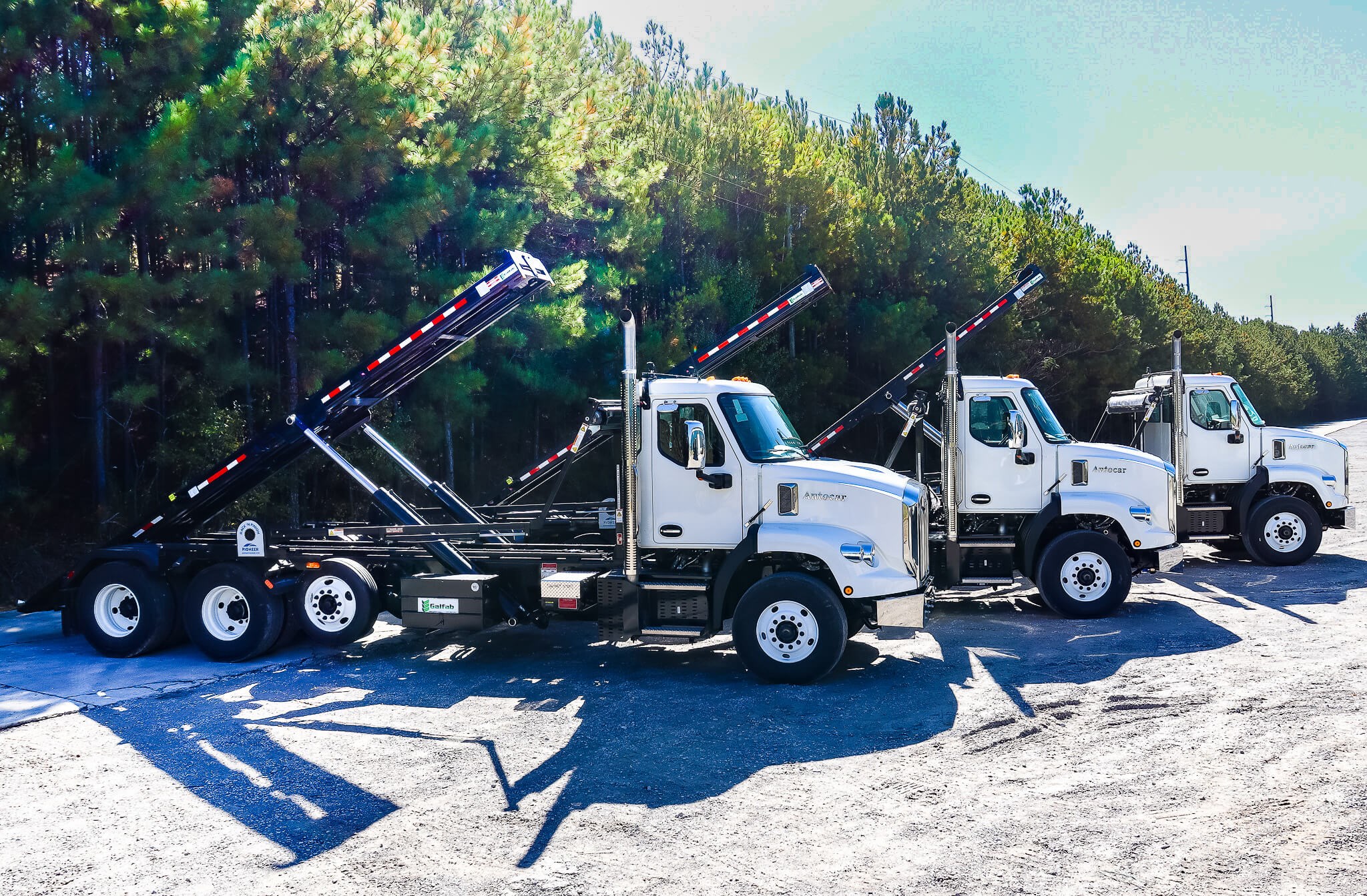
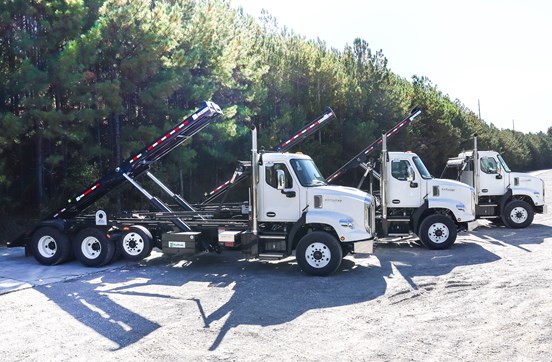
Container Handling Equipment
Load luggers are best for short-distance hauls when large quantities of heavy waste are generated, and conventional refuse collection vehicles are not practical. Featuring a vertical cargo-handling device with a hydraulic hoist mechanism, hydraulic cylinders activate the lifting arms for mounting and dismounting lugger containers. This process requires the operator to exit the cab to attach the container to the load-lugger system.Container carriers transport individual stationary containers or load multiple containers onto a trailer to haul to a site. Carriers equipped with a rotator can invert the container and unload its contents into a top-loading larger refuse container. The operator stays in the cab to attach the container to the container carrier system.
Parts of a Garbage Truck
Autocar uses components from world-class suppliers with a global presence. Autocar knows that customers experience significant savings and can locate parts more easily by leveraging off-the-shelf components. Whereas other OEMs use exclusive components only available through dealers. Parts and service are where other OEMs make most of their profit. Did you know that Autocar doesn’t even have a line item for parts and service? That’s because our goal is to sell trucks that never break down. Autocar does not profit from our customer’s down.
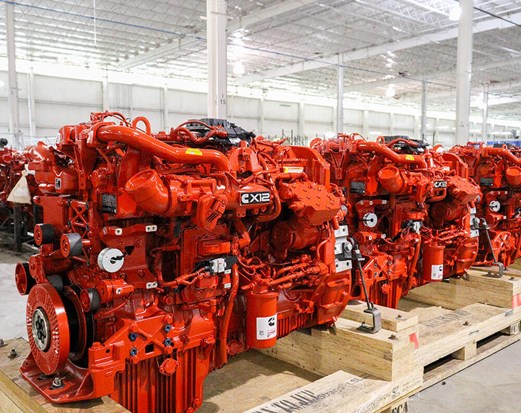
Garbage Truck Manufacturer Specifications
Spec’ing a trash truck for difficult applications is no easy job. When spec’ing a truck one of the most important things to know is the type of conditions the truck will operate (temperature, ground conditions etc.). With that information, selecting an automated front loader, automated side loader, rear loader or front loader is the next step. Here are a few other things to consider:
Another important spec’ing aspect is to know exactly what type of waste the truck will be collecting as some require specialized equipment. There are many types of wastes, here are just a few.
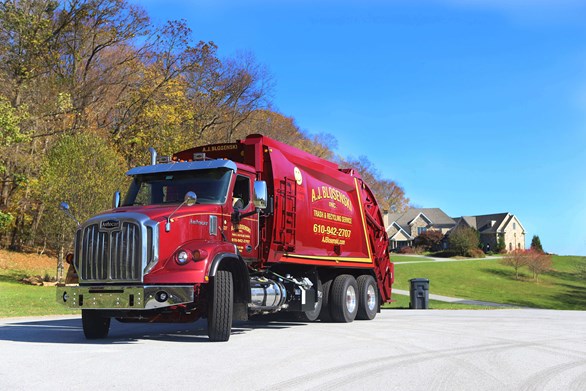
Other important garbage truck spec considerations:
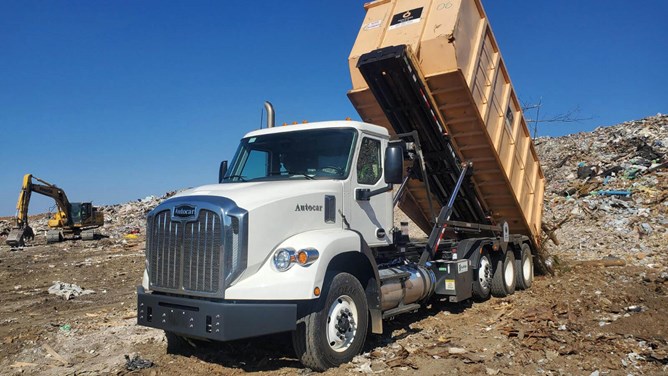
Significant Differences Between a Custom Garbage Truck and a Premade Garbage Truck
|
CUSTOM GARBAGE TRUCK
Manufacturing |
PREMADE GARBAGE TRUCK
Manufacturing |
|
As an American garbage truck manufacturer Autocar only engineers and builds customized refuse trucks built specifically for the customer, body and application.
|
Prebuild standard trucks are built for many purposes, bodies and applications. Add-on fees are charged to adjust the body for refuse.
|
|
Engineers- Chassis Body Integration |
Engineers- Chassis Body Integration |
|
Autocar is the only OEM to change the model of refuse truck production by bringing together the two main components -- the garbage truck chassis and the body -- and treat the truck as one complete tool. This focus on chassis-body integration results in fewer body integration issues. Autocar has the highest level of chassis/body integration in the industry.
|
Other OEMs do not customize during the engineering process because their truck inventory is premade. The chassis needs to be modified to integrate the premade inventory with a refuse body, significantly reducing the chassis integrity and often causing problems down the line due to splicing wires and drilling into the frame rails, etc.
|
|
Market |
Market |
|
Manufactures only niche and complex severe-duty vocations (refuse, etc).
|
Mass manufactures the same truck for all of North America. |
|
Customization |
Customization |
|
The only OEM that pre-engineers and offers complete customization before the truck is built. Every truck is designed and engineered for the customer’s needs and has the exact powertrain, axle and transmission options the customer selects to do their job best.
|
Minimal customization offered.
|
|
Service |
Service |
|
Offers 24/7 direct OEM support for the life of the refuse truck. Autocar does not profit from service. Autocar is the only OEM without a line item for parts and service in its P&L statements.
|
Delegates service to others, mostly dealerships. Service is typically a profit engine for dealerships.
|
|
Parts |
Parts |
|
Autocar leverages off-the-shelf components so that parts are easy to find. Gives owners the ability to fix the truck themselves versus going through a service center.
|
Captive OEM exclusive components – only through dealers – a major profit service line
|
|
Warranty |
Warranty |
|
Autocar empowers customers with the choice of obtaining warranty service at an authorized dealer, service center or in-house. Customers who perform in-house warranties are reimbursed a fixed rate per hour. Performing an in-house warranty substantially decreases the down time incurred when a customer sends a truck out to be repaired.
|
Typically relies on dealers/service centers to provide warranty service. |
|
And the biggest difference |
|
|
Autocar’s main profit center is to build premium trucks. |
Other OEMs’ main profit center comes from parts and service, not the truck. |
Garbage Truck Safety
Safety is a priority at Autocar. In 2020, Autocar set a new standard for safety when the ACX became the first severe-duty cabover engine OEM to release a suite of Advanced Driver-Assistance System (ADAS) technology which includes:
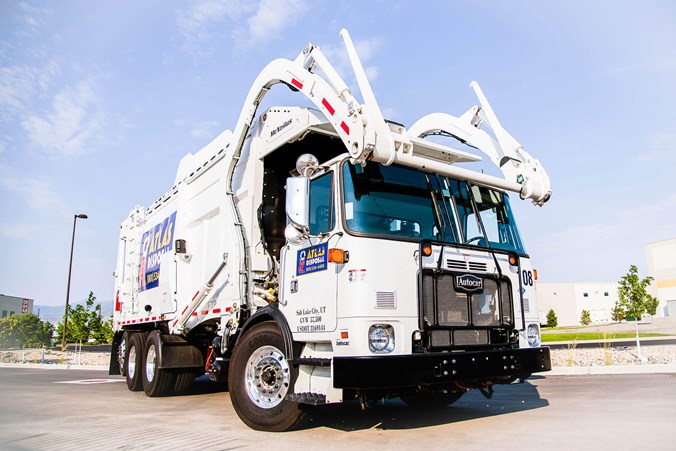
Fuel Types for Garbage Trucks
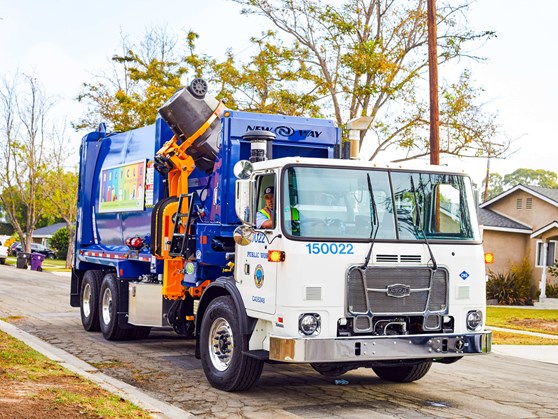
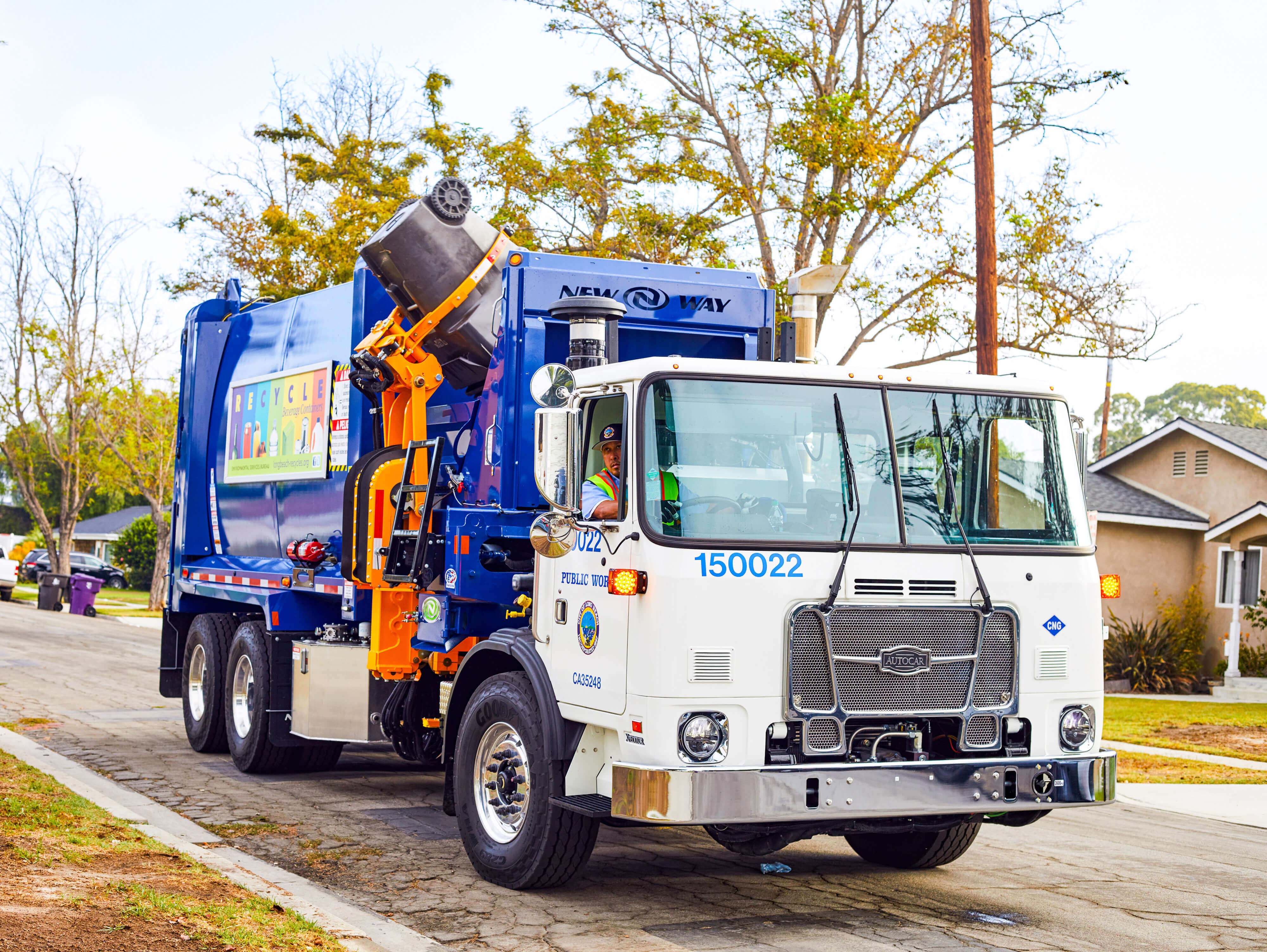
Refuse Truck Advanced Technologies/Telematics
Garbage truck manufacturer Autocar, leverages available advanced technologies to integrate with its trucks such as telematics. For over 20 years, telematics has developed to meet the needs of fleets and operators through the communication of real-time information and data tied to trucks in their fleets.
Autocar’s advanced telematics system provides operators and fleets with:
Garbage truck manufacturer Autocar, knows how to build and engineer tools that help make refuse collection efficient and safe that are built to be “always up.”
To learn even more about Autocar’s refuse and recycling trucks, visit us at www.autocartruck.com/refuse-and-recycling.
Sources:
https://www.thecurottocan.com/
https://wasteadvantagemag.com/marketplace/refuse-containers/
https://www.cummins.com/engines/vocational
https://www.allisontransmission.com/
https://www.epa.gov/report-environment/wastes
https://www.wastetodaymagazine.com/article/autocar-trucks-dc-refuse-truck-reveal-wasteexpo/
https://www.youtube.com/watch?v=yph5MYA5U8Q
https://www.wastetodaymagazine.com/article/waste-pro-autocar-advanced-driver-assist-system/
https://www.truckinginfo.com/331294/autocar-rolls-out-new-conventional-truck-model